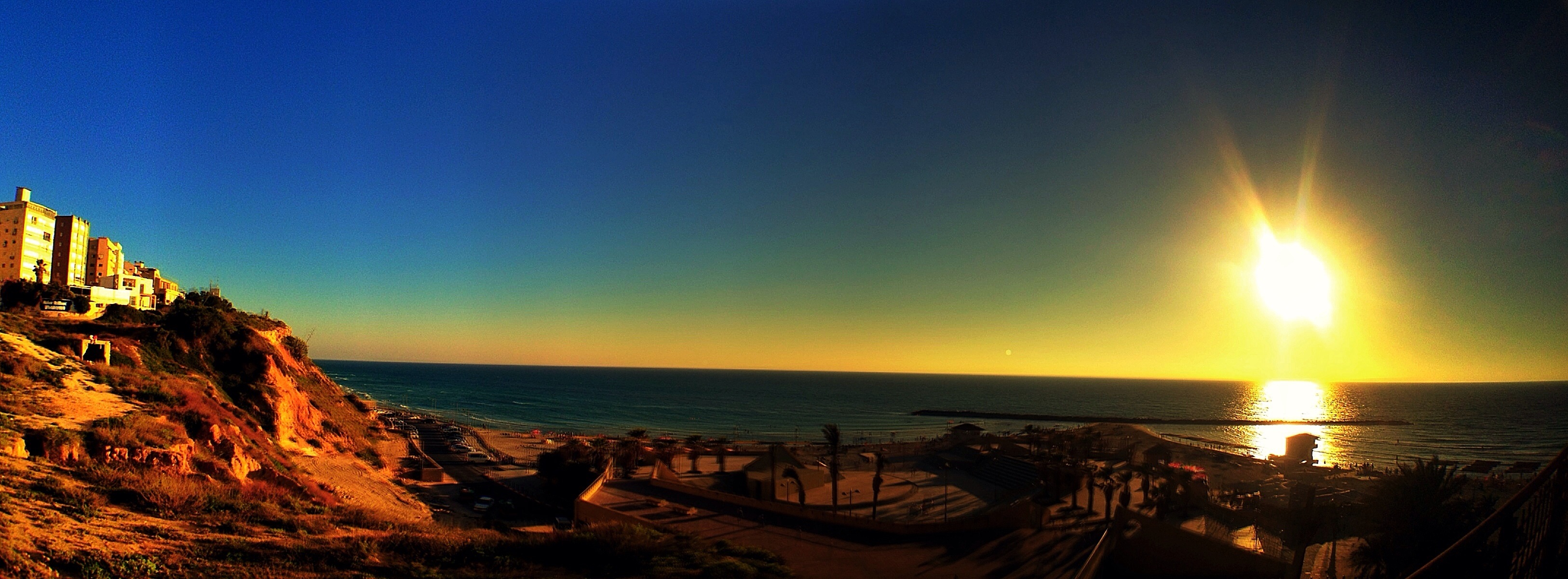
By Daisy Massey
[dropcap]I [/dropcap] arrived in Netanya via train, passing glimpses of seaside until finally arriving at “The Israeli Riviera.” Netanya’s nickname belies the tension between new immigrants, many of whom are French, Russian, and Ethiopian, and Sabras—Israelis whose families have been on the land since or almost since its founding—tough and prickly like cacti, but sweet on the inside. I stepped off alongside Russian and Ethiopian grandmothers returning from pre-Shabbat shopping, converse-clad dads leaving their tech jobs in Tel Aviv, and soldiers coming home for the weekend. I had been traveling around Israel for two weeks and was eager to meet my home for the next five months. Getting off with a suitcase, I got sucked into the tangle of electric bikes with child seats and plastic bags stuffed with pungent spices from the market.
In 2013, 35% of the about 200,000 the city’s residents were immigrants, as compared to Israel’s overall/national rate of 0.3%. (The US happens to also be at 0.3%). Netanya houses 11% of all Israeli immigrants, behind only Jerusalem and Tel Aviv who absorb 12%.
I experienced these divisions firsthand when I rode as an EMT on ambulances around the city. The most obvious separation is a geographic one. African immigrants, mostly Ethiopian, settle almost exclusively in South Netanya. The French live on the more expensive seaside real estate. Russians live throughout the city—wealthier families along the sea, poorer families in apartment buildings stained black by AC units. Israelis live throughout, and Arabs mostly in the neighboring towns.
My colleagues, themselves a mixture of Arab, Polish, Russian, Ethiopian, and Israeli, were generally tolerant. But one turned to me once as we left the home of an Ethiopian family who had offered us tea, “Black people…they smell like cats.”
Walking home from work, I wound my way past a park with grandparents and their progeny and turned into a residential neighborhood. The houses were mixed. The older ones looked Israeli, with concrete and green, palm-filled Mediterranean gardens. Newer ones were palatial and ornamented with columns and sports cars. I stayed with Israeli family friends in the upstairs apartment of a stucco house with poppies in the backyard. It looked almost European.
Up and down Netanya, the coastline is expanding. As modern glass buildings rise, the character of the city is changing. My friend’s elderly father, with whom we lived, was one of the first to start a family in Netanya after its founding in 1928. He bemoans that even as his hometown has increased its population and diversity, it has paradoxically become increasingly conservative and religious over the last twenty years. He thinks the whole country is changing in that direction, but accuses immigrants for an added rightwing influence.
An unavoidable melting pot, however, is the beach. With the exception of the religious beaches segregated by gender, all ethnicities are drawn to the same beautiful beaches. The South of the city has the finest sand, but the Northern beaches are more lively and are better for surfing and people watching.
After three months of living in Netanya, I wanted to extend my Visa for two more months. In the Immigration Office, I waited all day alongside crying children and worried faces. As an American Jew, my request went through easily once I sorted application process. But the chaos of Israel extends to its immigration; the procedure for Philippine citizens, who are allowed in Israel temporarily so long as they work as caretakers, or the contentious issue of African Jewry threaten to discourage Israeli diversity as it is blossoming. Settling in Israel is far easier for some groups than others.
I always felt at ease at the park near my friend’s house, a place where many immigrants raised their children together. In Israel, it is perfectly normal for parents to discipline children who are not their own. Sitting on a bench with usual seatmates, I could relax, knowing that the whole town was watching the girls I babysat. Ukrainian grandparents and I smiled and gestured at each other. My favorite friend, a stooped and quiet grandfather who spoke new Hebrew, always brought a Lion chocolate bar and snapped it in half, handing me my share without looking up.
Netanya’s neighborhoods are distinct and may be segregated by class and race. But the public spaces that people pour into as they enjoy the Israeli Riviera’s weather are unavoidably mixed. If the immigration climbs, people may just have to share their chocolate and accept the pluralism.
[hr]
Daisy is a sophomore in Jonathan Edwards College. Contact her at dorothy.massey@yale.edu.